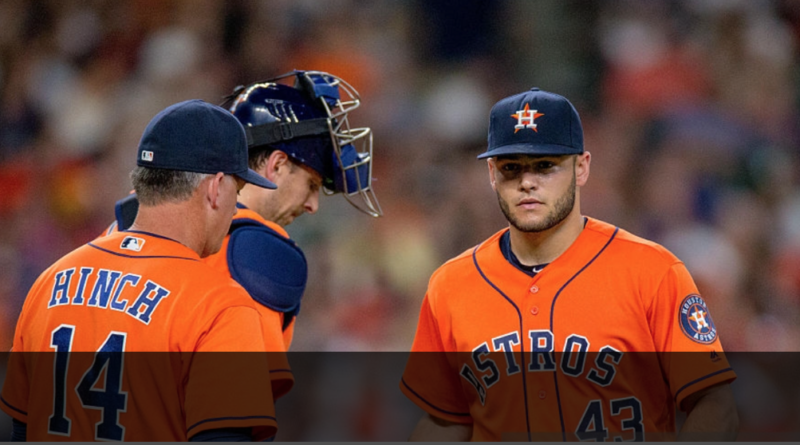Alan Truex: Baseball managers mix up the roles and mess up the postseason

Being a baseball manager should be less daunting than coaching a football or basketball team where you have to design plays and blow whistles. Of course, I’m hardly qualified to make that judgment, having never been a coach and not much of a manager.
What I do know is that major league managers make their work more difficult than it needs to be when they reinvent themselves in postseason. Everything they did that worked so splendidly in the spring and summer is suddenly suspect.
Almost all the starting pitchers become relievers. Even if they start the game, they’re not expected to stay in it long enough to earn credit for the W. That would require a full five innings. They’d be better off being a reliever if personal wins mean anything to them.
The Los Angeles Dodgers’ Clayton Kershaw is the most visually impressive pitcher today, and his statistical efficiency compares favorably to the greatest Dodger lefty of all time, Sandy Koufax.
But there’s one major difference. Koufax completed 20 games a season, while Kershaw is happy to make it through the fifth inning.
So it was when Kershaw faced the world champion Chicago Cubs in the National League Championship Series. He was not at his absolute best but he was sharp. Certainly not something you replace in expectation of something better. In five innings he allowed four hits, one walk and two runs and struck out four.
The game was tied, but manager Dave Roberts thought his ace might be about to collapse from this meager workload in this most pressurized of situations.
Roberts was more comfortable turning the game over to a bullpen employee earning a tiny fraction of Kershaw’s paycheck.
Can you imagine what Nolan Ryan would have done if a manager tried to pull him after 70 pitches in a 2-2 tie?
The closest to that was when Astros general manager Dick Wagner decided that on advice of doctors, he was limiting the 40-year-old future Hall of Famer to 100 pitches in a game. That was the beginning of the Era of the Pitch Count.
Wagner considered his plan a success because Ryan stayed healthy, made 34 starts and pitched 211 innings.
Ryan considered Wagner’s plan a ridiculous failure because he pitched as well as ever – 2.76 ERA, 270 strikeouts – but had a won-lost record of 8-16. His bullpen blew numerous saves, and some wins he would have bagged slipped away.
Late in that 1987 season, Ryan became so enraged that he confronted Wagner in the clubhouse, and his heated words were overheard by reporters in the hallway.
Thirty years later, the 100-pitch limit is standard. Even if, like Stephen Strasburg, the pitcher is in his 20s.
The postseason brings out the worst instincts in managers. They ask for too little of their stars – Roberts yanking Kershaw – or they ask for too much.
Astros manager A.J. Hinch was too early to abandon Lance McCullers when he was breezing through the New York Yankees in Tuesday night’s ALCS game. McCullers led 4-0 after six innings. Hinch hooked him after one batter reached base in the 7th.
True, McCullers is no ironman. He went to the disabled list with “arm fatigue” in August after 120 innings. But he was not fatigued or overheated Tuesday night in a chilly Yankee Stadium. He threw 81 pitches, 50 of them strikes.
And then his bullpen blew up: Chris Devenski, Joe Musgrove, Ken Giles. The Astros lost 6-4 and their 2-0 series lead flattened to 2-2.
“I don’t get it,” said David Ortiz of Fox Sports. “You got a guy controlling this lineup and you take him out of the game. I don’t get it.”
I don’ get it either, but a lot of managers do.
In the 2016 World Series, Cubs manager Joe Maddon assigned an eighth inning to Aroldis Chapman, when up until then the pitcher had been summoned only for the ninth.
In a role he did not expect to have, Chapman pitched poorly and determined that he would not pitch for Maddon again. He changed teams, to the New York Yankees.
Maddon made another bizarre move in this year’s NLCS. With Game 2 tied 1-1 in the 9th he did not call on his designated ninth-inning closer, Wade Davis. Instead he converted a starting pitcher, John Lackey, into a reliever.
Lackey promptly gave up a walk-off home run to Justin Turner. That was not entirely shocking. Turner hit 21 homers this season and Lackey led the league in home runs allowed.
That maneuver worked out worse than one Hinch tried in the American League divisional against Boston. His ace starter, Justin Verlander, had never pitched in relief – “not even in Little League,” he said.
So Hinch inserted him in the fifth inning with a 2-1 lead, one out and a runner on base. Verlander was not comfortable in this improvised role. There had never been a rehearsal in the regular season. The first batter he faced homered to give Boston the lead, though Verlander rallied and ended up with the win.
But I don’t understand the risk. As Yankees manager Joe Girardi pointed out, “Players like routine.”
When Terry Collins managed the Astros he decided pitchers do not need roles. “Your role is to get people out,” he told them. But he soon learned that they pitched better when they had a clearly defined job.
Cleveland Indians manager Terry Francona decided that since it was postseason he could pitch Trevor Bauer on three-day rest instead of the usual four. The tactic backfired. Bauer lost, and the 2017 season ended for the Tribe, who were solid favorites to win the World Series.
Maddon’s move with Lackey was based on dubious logic. “We needed him for the save,” he said.
No, you needed him for the win. This was no time for experimentation.
